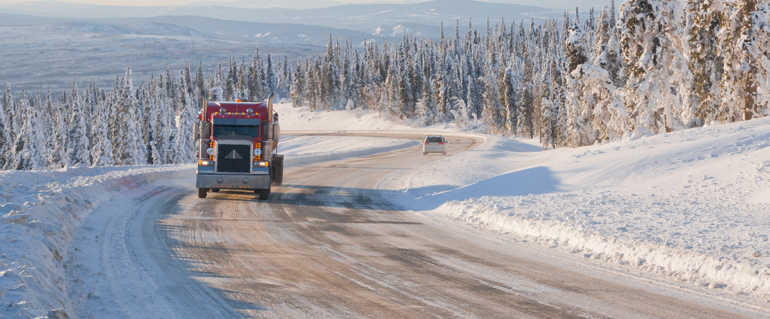Shipping Considerations Made in Extreme Weather
Alaska experiences severe weather, especially in the winter. Since those months are just around the corner, let's take a look at the shipping considerations made in extreme weather for ground, air, and cargo shipping.
Ground Shipping
Shipping goods in Alaska via ground transportation is already a challenging process. In a previous post, Real Ice Road Truckers, we discussed how frozen "roads" offer access to rural areas that are not as accessible in warmer months. With limited transportation infrastructure except near larger cities, getting around via truck can be dangerous when the temperatures dip and snow and ice are frequently forecasted.
Knowing what weather conditions are will help set expectations for delivery windows. For instance, a shipment may have significant delays getting to its recipient with weather delays. Blizzards, avalanches, washed-out roads, and flooding can easily create delays, so if possible, factor in extra time to ship/receive goods.
Extreme weather also has a way of taking its toll on vehicles. Proper maintenance is critical to avoid a long delay due to equipment breakdown.
Also, something important to consider is the temperature during transit. Certain goods, such as electronics and computer parts, can be affected by the below-freezing temperatures. Those goods would need to be adequately insulated during transit to avoid damage.
Air Shipping
When shipping by air, it is vital to know the flight conditions for the plane and the airport. This includes conditions all along the route to be traveled. When the weather forecast includes any precipitation or below freezing temperatures, the airport crew works tirelessly to keep planes and airport runways operational. This would consist of de-icing measures such as a chemical spray or special heaters and plowing for a clear runway for landings and takeoffs. If conditions are not safe, the flight and shipment may be delayed until either weather improves or the de-icing procedure is complete and satisfactory.
Cargo Shipping
Extreme or challenging weather can also lead to dangerous water conditions for cargo ships at sea. The last thing a ship's crew wants to hear is that "a storm is a brewing." So, again, staying updated with the weather forecast for the entire route can be very helpful. If rough seas are ahead, a ships' captain may be able to change course, go around, or travel through the weakest area of the storm.
It should be confirmed that everything is secure on deck, and the ship's crew is not on deck during a storm. One wave or large spray could sweep you right off the ship into the water.
By now, you see that the number one consideration is to know what the rough weather will be so that you can try to avoid it. When shipping to extreme weather areas, like Alaska, you need to have a game-plan that includes the next few steps.
- Preparedness – By planning for various possible incidents and outlining procedures to recovery, you will be positioned to recover quickly from any delay.
- Response - Even if the weather event itself was short-lived, it is often the damage that is left behind that can hamper delivery efforts. So the next step is to determine the impact and prepare a response.
- Recovery - This process can take time, depending on the situation and the response plan's effectiveness. Every day of disruption means loss of profit and can negatively impact client relations. When regular service is restored, it is essential to re-evaluate the preparedness plan and response procedures to minimize loss or delays during future weather events.
One last consideration is being transparent with customers. Honest communication with customers regarding any delays is much appreciated. The customer is more likely to be flexible when they know a situation was mostly out of your control, but you are working hard to resolve it.
Alaska Air Forwarding works hard to be prepared for Alaska's heavy weather and reduce delays. We know how to handle just about anything, including shipping to remote areas of the state. Need shipping? Fill out our quote form today and see how we can help you.






